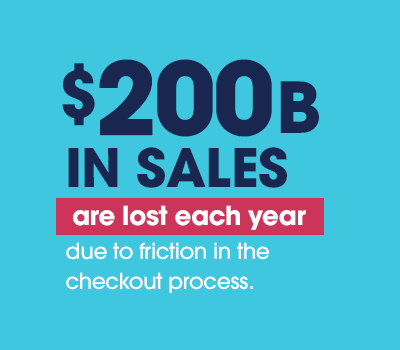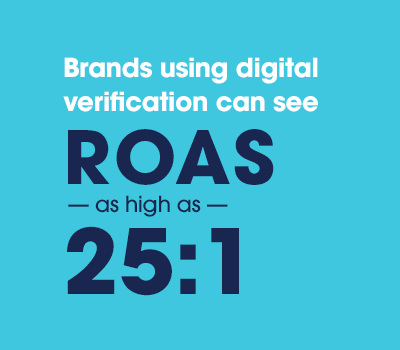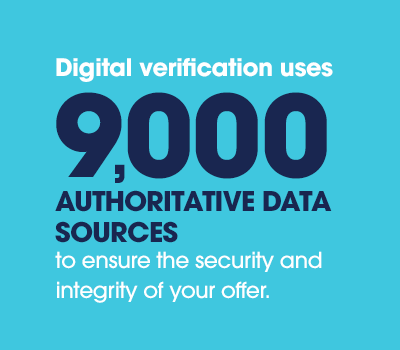Affiliate-based marketing is popular, and it’s easy to see why. In exchange for a commission, affiliates promote brand offers. It’s a win-win, right? The answer is “It depends.”
When it comes to delivering personalized offers to consumer communities such as students, teachers, healthcare workers, or the military, the affiliate-centric marketplace verification model can be a losing bet for marketers. Not only is marketplace-based verification more expensive in the long run, it delivers a poor customer experience and has a number of other risks and limitations.
This post takes a closer look at the problems with using marketplace-based verification and highlights a way to solve them with a more cost-effective, lower-risk, higher-return approach: digital verification.
The Risks of Marketplace Verification
Partnering with an affiliate-based marketplace verification provider to verify your personalized offers is problematic because it:
01 Disrupts Your Brand Experience and Lowers Conversions
Perhaps the most basic problem with marketplace verification is that customers have to leave your brand and your purchase process to create an account with someone else. That not only gives them control of your customer experience, it creates friction. And greater friction equals lower conversion rates: $200 billion in sales are lost each year due to friction in the checkout process.
Digital verification occurs instantly in a frictionless process that takes place directly on your website and entirely within your brand. You have control over the look and feel, and the customer experience is much more user friendly.


02 Costs More
On the surface, marketplace verification seems great: the marketplace handles promotion, and you get the sale. But there are hidden costs. In addition to charging a verification fee, they also collect a commission on every sale. That hurts your ROI. And while the marketing they do for you may seem free, it’s not. They often charge a fee for sending out emails and for premium placement on their websites.
With a digital verification solution, you pay a verification fee, and that’s it. You can promote the offer through all of your channels and pay no commission. And while the initial verification fee might be higher than an affiliate-based model, the overall cost for the lifetime of the customer is lower. That’s because all those little affiliate fees add up—a problem that’s exacerbated by repeat purchases. Brands using digital verification can see ROAS as high as 25:1.
03 Narrows Your Channel Marketing Options
Marketplace verification providers receive “last-touch attribution,” meaning they receive the commission on a conversion. You can still invite affiliates like Groupon and RetailMeNot to join your program, but if they can’t collect a commission, there’s no incentive for them to feature and promote your offer.
Digital verification increases your channel marketing options because you can offer the commission on a purchase to any affiliate who can help you reach your audience. It is affiliate-neutral and simply passes the tracking through to purchase.
04 Prevents You from Running Nurture Programs
Customer acquisition is the beginning, but the real power of a sale is the opportunity for future sales that grow your customer lifetime value (CLTV). Marketplace verification providers can’t integrate into your brand’s loyalty program, which is a big limitation.
When you send your customer off to a marketplace for verification, it’s more difficult to nurture your customers and encourage loyalty. That’s because the marketplace now owns the customer data you would need in order to do just that. Affiliate-based models may help you market your brand, but they are also marketing on behalf of your competitors. Their allegiance is to themselves.
Digital verification provides you with zero-party data that you can use to drive nurture programs and create lifelong customers.


05 Exacerbates Data Privacy Concerns
Some marketplaces require highly personal information in order to verify, like a social security number (SSN). According to Kelton Research, 82% of people surveyed said they would not be willing to provide their SSN to take advantage of a personalized offer. And when you put your customers into the hands of marketplace verification providers, they retain the customers’ personally identifiable information (PII), creating greater risk.
Digital verification requires only the data people are most willing to provide: name, email, DOB, and it doesn’t hold onto PII.
06 Limits Your Reach
No marketplace verification solution provides global coverage of multiple consumer communities. This is particularly limiting for brands that want to reach a wide range of groups or expand their program internationally. And it’s especially true for personalized promotions to college students, who number 235 million and have more than $574 billion in spending power in the US alone.
Digital verification confirms membership in nearly a dozen consumer communities, including worldwide coverage for college students. It even enables you to create custom audiences. For example, Icebreaker—the performance apparel company—uses digital verification for its personalized offers to ski instructors and other outdoor professionals.
07 Makes Student Offers More Vulnerable to Fraud
When verifying student status, marketplace verification relies largely on .edu email addresses, and this approach has many problems, including rampant fraud. An entire industry has built up around helping people create fake .edu email addresses in order to gain access to services and discounts. At the same time, many of the students you do want to reach don’t even have .edu emails addresses.
Digital verification doesn’t rely on .edu email addresses. Instead, it uses 9,000 authoritative data sources, which ensures the security and integrity of your offer.
Providing personalized offers to consumer communities is a highly effective marketing strategy, and when you use digital verification to secure them, it costs less, provides a better customer experience, and delivers greater returns.









